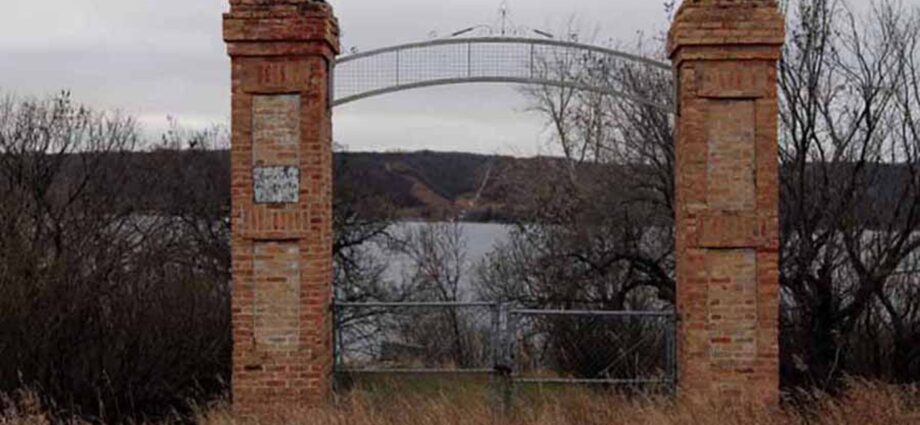
By Jeremy Appel, Local Journalism Initiative Reporter, Alberta Native News
February 13, 2023
(ANNews) – Star Blanket Cree Nation in Saskatchewan has found 2,000 anomalies through ground penetrating radar at the site of the former Qu’Appelle Indian Residential School, but the nation’s leadership cautions not all of these are necessarily unmarked graves.
Sheldon Poitras, who led the nation’s ground search, told CTV News some anomalies could be stones, soil or pieces of wood, but the team found a jaw bone fragment believed to be 125 years old from a child who was five or six years old at the time.
“This is physical proof of an unmarked grave,” he said, adding that it was confirmed to be a jaw bone by Fire Hills Police Service and the Saskatchewan Coroner’s Office.
The search team also found a series of underground tunnels and rooms, Poitras added.
“A lot of those pieces are starting to come together, the data and the stories are matching up and we find that very interesting, very overwhelming, and motivates us to continue with the searching,” he said.
These findings are the result of the first phase of the search for unmarked graves, conducted by AXIOM Exploration Group, which began in November 2021 and will cover 55 acres once completed.

It covered the school’s grounds, located about 80 km northeast of Regina in the Village of Lebret, as well as the flat area surrounding it.
“Our hearts are heavy today, this has been a very emotional journey for all of us,” Star Blanket Cree Nation Chief Michael Starr said.
Starr added that finding the bone fragment “has changed everything, it’s changed the things that we’re going to do, it’s changed our mindset, it’s changed our way of life in a way.”
“We are moving with what we found and we will bring honour to the remains, that of a young child,” he said.
Poitras said AXIOM will assist the nation in excavating the site to determine the nature of the anomalies.
“There’s been discussions with AXIOM about doing miniature core drilling,” he said. “We’ll pick an area of interest, we’ll send a core drill down, collect a sample, bring it up, and test that sample for DNA.”
![Sony PlayStation Store 110 - Sony, [Digital]](https://i0.wp.com/i5.walmartimages.com/asr/5d3e8d52-3525-4e75-b862-10394c67a31c.c3f21de9f6a2f65537248191772f43b3.png?w=1380&ssl=1)
The next phase of the search will look offsite, but Poitras said they only have the support of half the landowners in the vicinity.
“There’s a lot of areas off site where we have to work with the landowners moving forward in the different phases off the reserve. We have to meet with these landowners and gain their permission to search the area and see what we can find,” he said.
The landowners are divided into two camps — those willing to do whatever they can to assist the search and those who would rather not get involved, Poitras explained.
“Both these extremes have land that we are interested in [searching],” Poitras said. “It’s going to take some tactics and some diplomacy to get everyone on the same page in the coming days,” he added.
Sharon Strongarm, a community knowledge keeper, told CTV in a separate story that the findings provide a sense of validation for local residential school survivors.
“People didn’t believe what we went through as survivors. I think it’s a good thing that people know now — know the truth,” Strongarm said.
She added that while it’s difficult to forgive the horrors of colonization, it’s an important step in moving forward.
Alex Keewatin, another band member, told CTV she attended the school for a year in the 1980s, where she was sexually abused.
“I know I wasn’t the only person who endured that … it was pretty tough,” she said.
The Star Blanket reserve is located across the highway from the former forced assimilation institution, so nation members have to constantly relive their traumas, Poitras said.
“They see it every day. It’s there, everyday,” he said.
“It’s really tough to do, when it’s here, and they know the stories, and they understand what has happened here. Maybe, some of them have had personal experience. Others have stories of loved ones’ experiences.”
The Qu’Appelle Indian Residential School opened in 1884, was expanded 1887, 1889 and 1895, and then shut down in 1995.
In its early years of operation, the school permitted Indigenous languages and in 1951 became one of the first residential schools to offer high school education, CTV reported.
The school had a high death rate, according to the Truth and Reconciliation Commission, 71 deaths out of 174 students discharged in its first nine years of operation.
Saskatchewan’s premier and leader of Opposition both expressed their condolences towards the nation.
Premier Scott Moe tweeted that he was “saddened to learn of the remains of a child at the site of a former residential school in Lebret,” adding that “the Star Blanket Cree Nation has the full support of the government at this difficult time.”
“Residential schools represent a dark period in Canada’s history – friends, neighbours, and family members attended the schools, and many of these folks and the ones they love are hurting today,” Moe wrote. “We need to stand by them and help in every way we can.”
Saskatchewan NDP leader Carla Beck offered support “to the community and to all survivors and their families who must relive this pain and trauma, a wound that is reopened with every new discovery.”
Subscribe to our newsletter.
“There are many emotions but we cannot allow ourselves to become numb,” she added.

